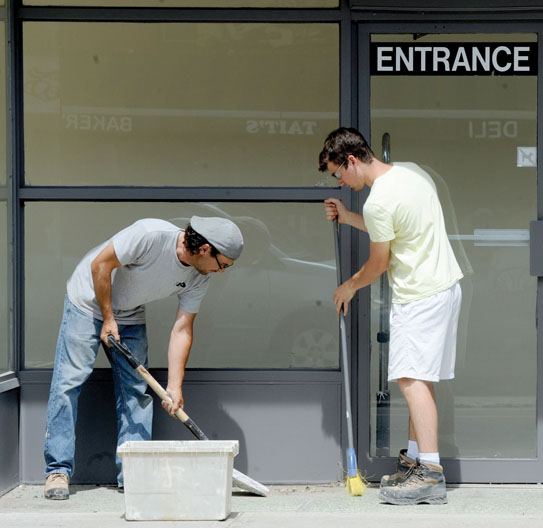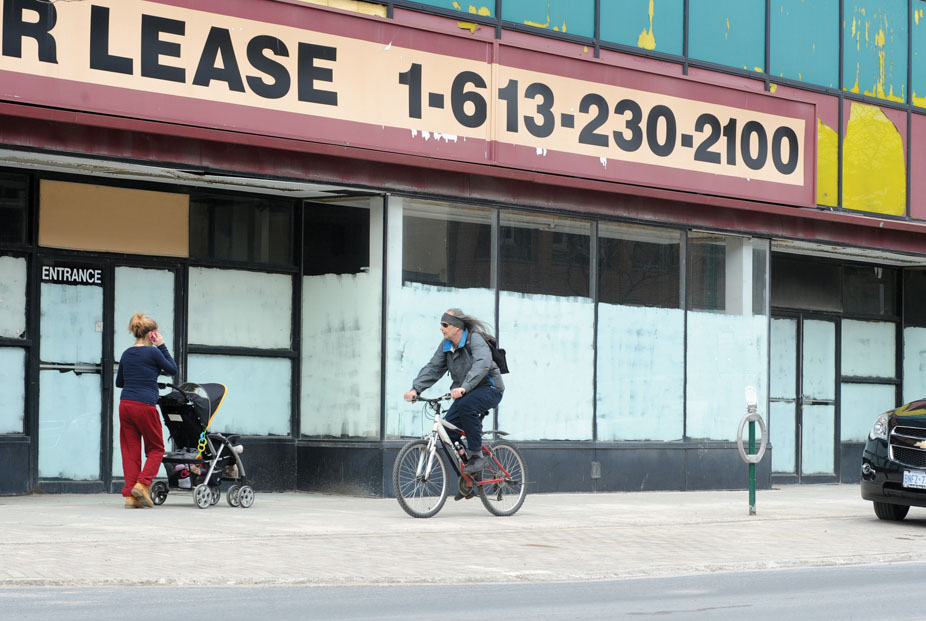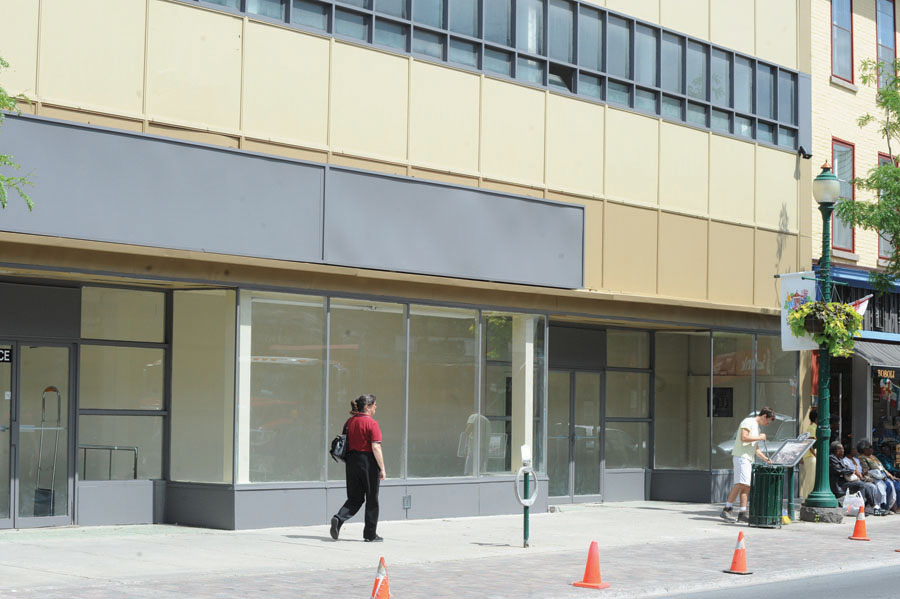
(Alvis Larocque, left, and Troy Merkley work on the sidewalk Monday in front of the former Woolworth's building.)
Maybe this could be an experiment on the various permutations of the broken windows theory.
To quote Encyclopaedia Britannica, the theory “links disorder and incivility within a community to subsequent occurrences of serious crime.”
Let me propose to transpose this theory – in an admittedly messy and unscientific way – from the realm of criminology to that of economic development.
Let me further propose the following specimen: Brockville's former Woolworth's building, which has recently been transformed from this:

to this:

The nature of the experiment will be to test the validity of Downtown Brockville executive director Brenda Clarke's suggestion: “Now that it's aesthetically more appealing, maybe it'll draw a little more interest."
In this downtown eyesore's former state, broken windows seemed only a short time away. Bits of paint were flying off in the wind, blown into fine granules, of the kind that enter your airways and transform into a general malaise about the state of the downtown core.
Yes, I am repeating myself, and so were many of the people who gave voice to that malaise in letters to the editor.
On Monday, when I returned downtown for the follow-up story linked above, people's airways seemed a lot healthier. Brenda Clarke even gave the improvements a thumbs-up.
Of course, this is only a partial solution. Its chief merit is that it hides the true malaise inside the building, which still remains.
Still, while a longer-term solution seems much further off, we might at least hope that, just as more orderly neighbourhoods appear to reduce the crime rate, so a more orderly vacant downtown building might increase the level of economic optimism, and from there increase the level of economic activity.
If that doesn't work, we can always bring in the artists.